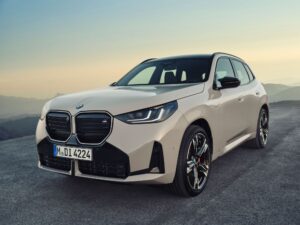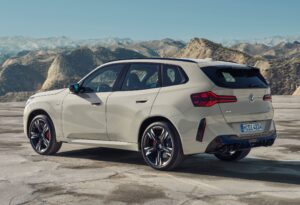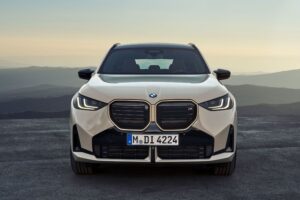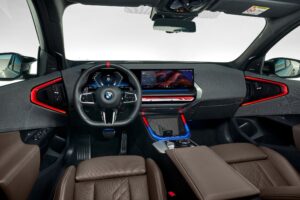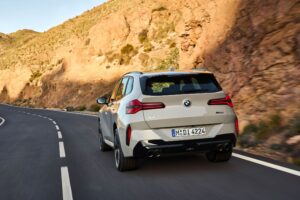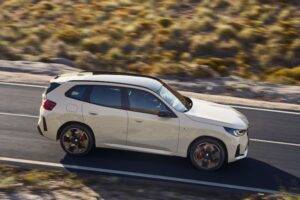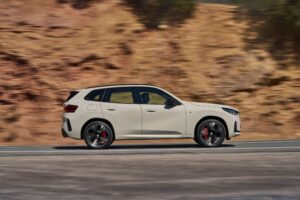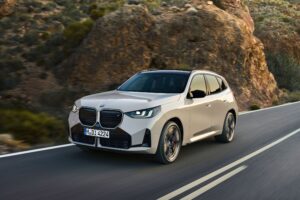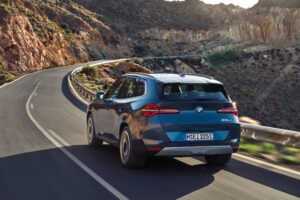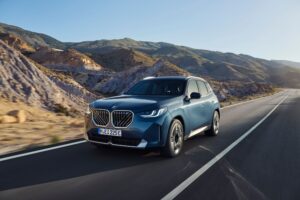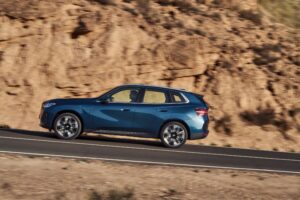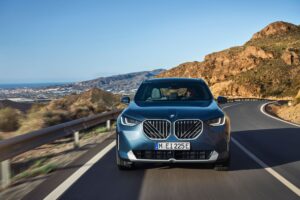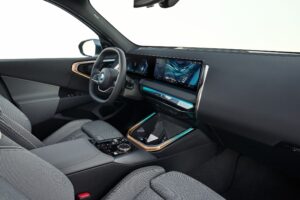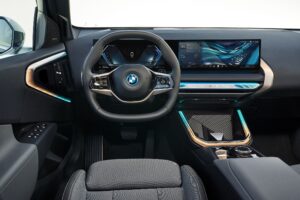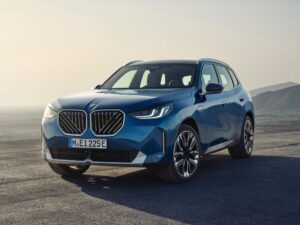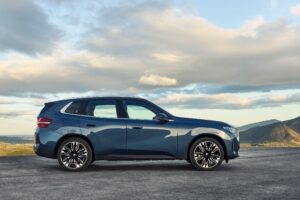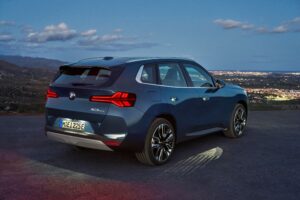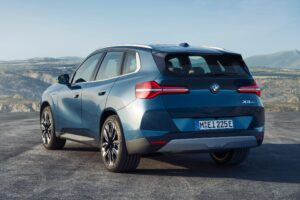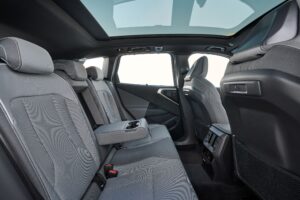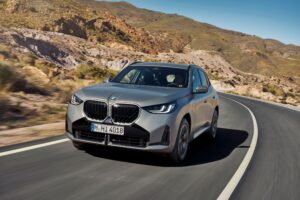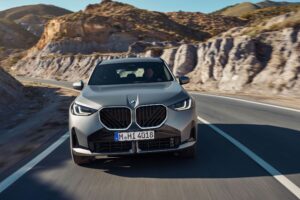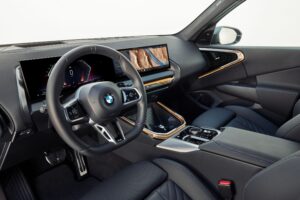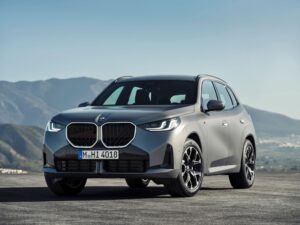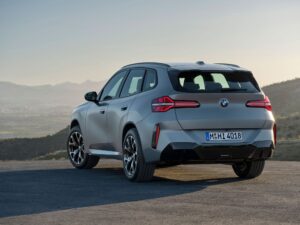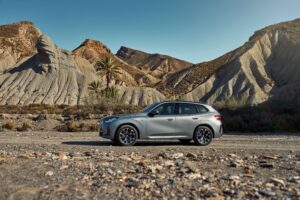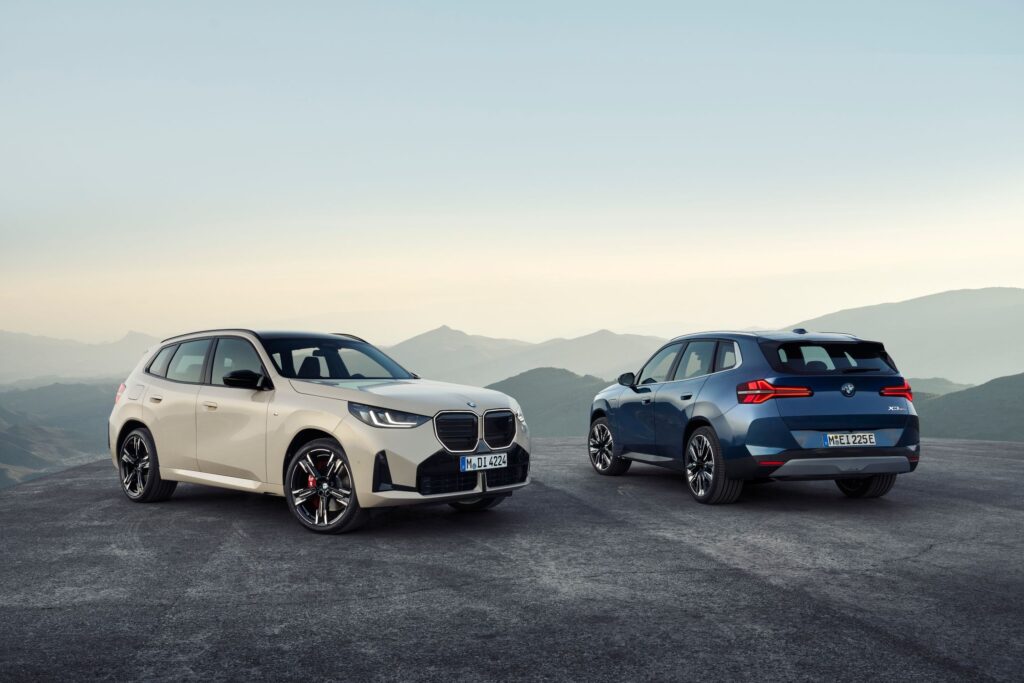
BMW’s ever-popular mid-size premium SUV, the X3, has been comprehensively redesigned for its fourth generation. This new iteration moves forward with a focus on combustion and plug-in hybrid powertrains, with an all-electric alternative coming next year in the form of the Neue Klasse SUV.
The X3 launches with four engine options. The entry-level xDrive20 boasts a 2.0-litre turbocharged four-cylinder petrol engine with a 48-volt mild-hybrid system, producing 151 kW (205 hp) and 272 Nm (200 lb-ft) of torque. This allows the X3 to sprint from 0 to 100 km/h (62 mph) in 7.8 seconds.
Unlike the recently updated 3 Series, BMW is keeping a diesel option in the X3 line-up. The xDrive20d employs a 2.0-litre turbodiesel unit aided by a mild-hybrid system, offering 145 kW (194 hp) and 260 Nm (192 lb-ft) of torque. This diesel option reaches 100 km/h from a standstill in 7.7 seconds.
For those seeking more power, the xDrive30e plug-in hybrid delivers a combined output of 220 kW (294 hp) and 400 Nm (295 lb-ft) of torque. This potent combination comes courtesy of a 2.0-litre turbocharged four-cylinder petrol engine working alongside a 22.3kWh battery pack and an electric motor which gives the SUV an electric range of around 90 km.
Sitting at the top of the range is the M50 xDrive, currently the only six-cylinder option. This performance-oriented model utilizes a tweaked twin-turbocharged 3.0-litre six-cylinder unit producing 293 kW (392 hp) and a hefty 520 Nm (383 lb-ft) of torque giving it a 4.6 sprint to 100 km/h. The M50 also benefits from several chassis upgrades, including larger M Sport brakes, an M Sport differential, variable sport steering, and standard-fit 20-inch wheels. An even more potent X3 M Competition model is expected to be revealed in the coming years.
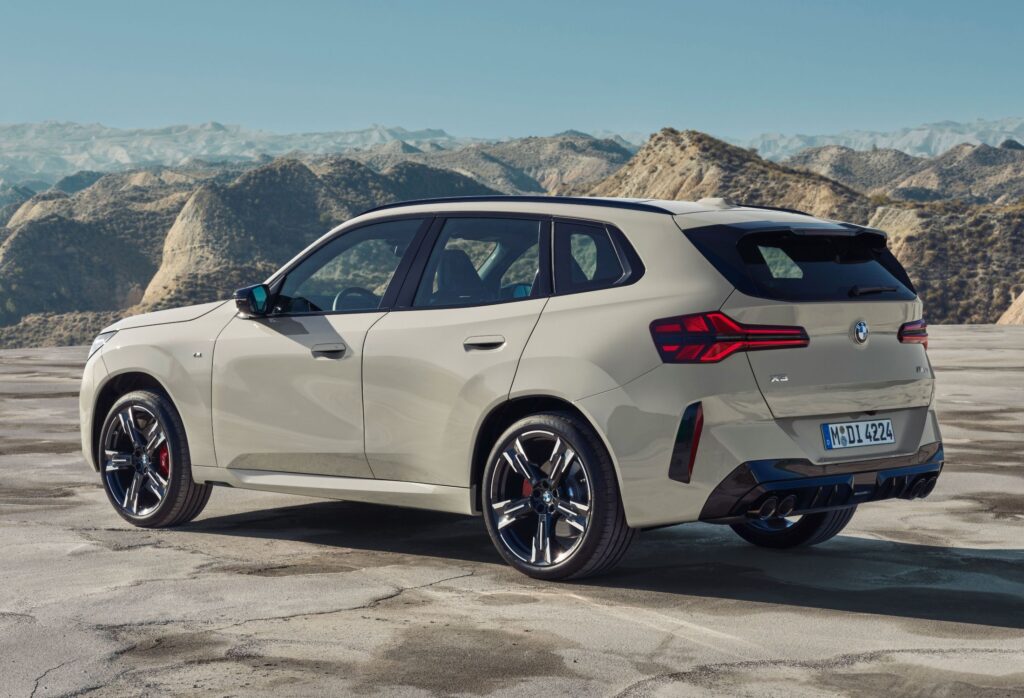
Those seeking a purely electric BMW SUV of this size will need to wait for the production version of the Neue Klasse X concept, scheduled for launch in 2025. This upcoming model will be built on a new electric architecture and boast innovations like a full-width head-up display and next-generation battery technology, while the new X3 remains optimized for combustion powertrains.
Despite the varied powertrain offerings, all X3 models benefit from a lighter and stiffer structure, featuring a wider rear axle and new suspension with a double-joint strut front axle and a five-link rear setup. Coil springs and passive dampers come as standard, with adaptive dampers available on the options list. Notably, the X3 does not offer air suspension or rear-wheel steering, unlike some competitors.
By eliminating the need to accommodate a pure-electric powertrain, BMW has optimized the X3’s body and chassis specifically for the petrol, diesel, and hybrid engines, resulting in a commendable weight range across the variants. The lightest X3 comes in at 1,855kg, increasing to 2,065kg for the plug-in hybrid.
The most striking change for many customers will likely be the X3’s new design. It blends classic BMW styling cues with the more sculptural aesthetic seen in models like the iX SUV. Two main trims are offered – xLine and M Sport – both emphasizing a modern and sleek look, though not quite as bold as some of BMW’s other offerings.
The overall dimensions haven’t grown significantly; the X3 is just 40mm longer and 20mm wider. However, it sits 25mm lower, contributing to a wider stance.
The new BMW X3 will be built at BMW Group Plant Spartanburg (USA) and Plant Rosslyn (South Africa) using a production process focussed on conserving resources and circularity. Its South African market launch will get underway in the fourth quarter of 2024.




